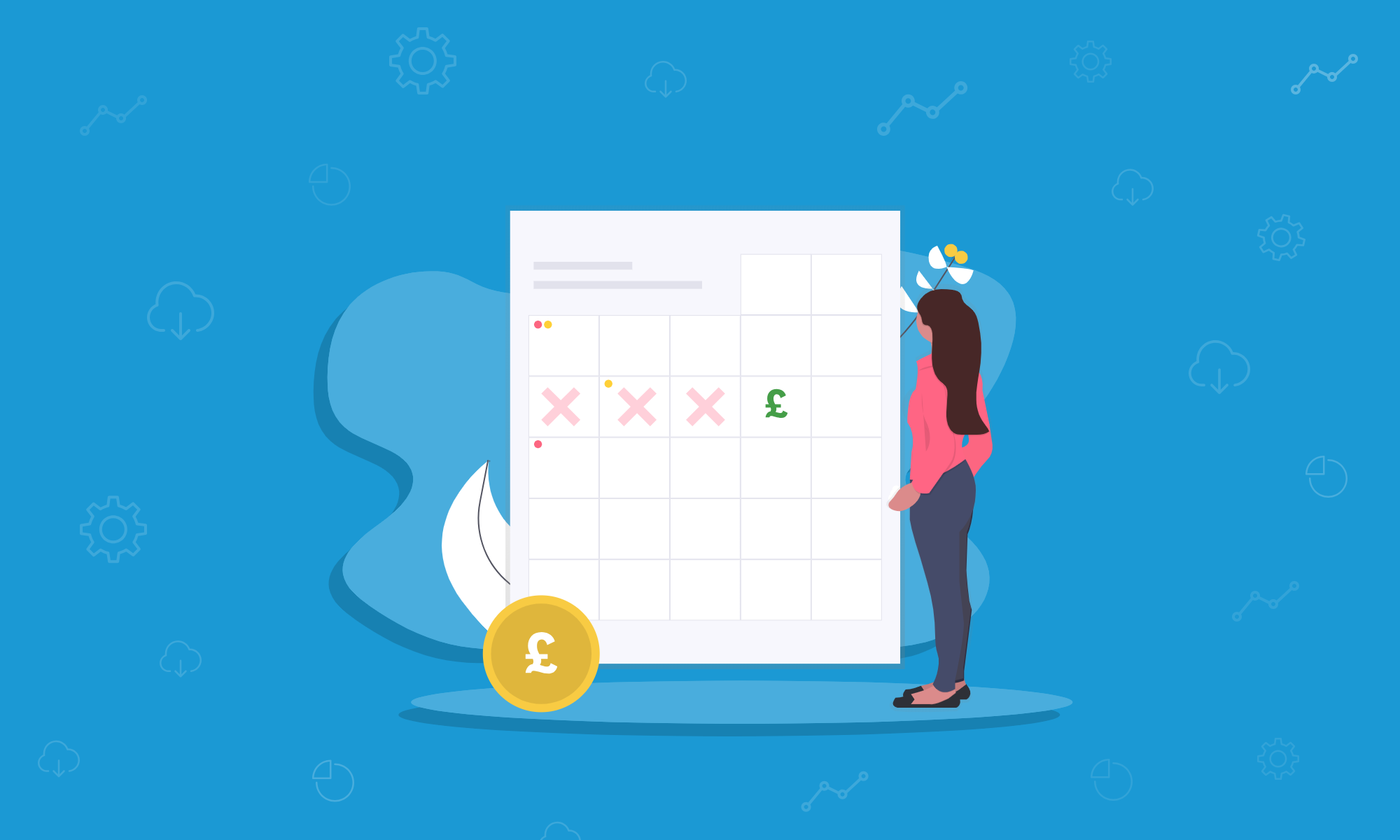Billing clients for the work that you do sounds simple enough, but the reality can sometimes be a bit tricky. You might charge an hourly rate, a monthly fee, or a set amount per project.
Then there’s the question of when to actually invoice the client. Before getting started? Should you request a deposit first? Or send an invoice after the work is completed?
The right process for you will depend on a few different factors. The nature of your work, the clients’ expectations, or other considerations such as dealing with new (and unknown) customers can all inform your decision.
We look at the options you might consider when deciding how to bill your clients.
Asking clients for upfront payments
You might agree to provide a service to your clients, and then bill them for the work before even getting started.
The great thing about upfront payments is the way it totally avoids the risk of late or non-payment. If you take payment upfront then you won’t waste valuable time carrying out work, only to not get anything for it. It might be particularly attractive for anyone also buying materials as part of the job.
There are some downsides to this method. Some customers might feel that the risk of paying the bill, only to not receive the work, is simply not worth taking. Especially if this is the first time that you’ve worked together!
An alternative is to only charge a portion of the bill upfront, for example 20-50% of the final bill. That way, neither side feels they’re risking being left completely out of pocket.
Who uses upfront payments?
Anyone can ask for an upfront payment. Some businesses have a policy of insisting on upfront payments from new customers, then switch to monthly billing or using credit terms for future work.
Invoicing on completion
Sending an invoice is one of the more common methods of billing a client, particularly one-off clients. Plenty of businesses wait until they complete a piece of work before billing the client.
It gives the client a chance to see the results of the work and ensure they’re happy with it before paying. They’ll have peace of mind, but it could have its downsides for you.
Handing over work before getting payment means there’s a chance the client will refuse to pay, pay late, or change their mind about what they wanted.
Is invoicing on completion right for me?
Freelancers such as writers and graphic designers frequently invoice on completion, so that they can include the cost any amendments in the final bill.
Larger projects could be organised into smaller sections of work, and invoiced as separate jobs as they’re completed.
Sending repeat invoices
If you’re providing repeat services, undertaking a large project, or your services are kept on retainer by the client, you might invoice them on a monthly basis.
This method means that you have regular income, which can certainly help a business with its cashflow. The downside is that this might result in a balance at the end, with you owing money back the customer, or the customer’s final bill to pay being larger than the monthly fee they were used to.
Should I send monthly invoices?
This method is best for those providing regular services, or lots of pieces of work throughout the month. If you provide several pieces of work per month, sending individual invoices after each job can quickly get confusing.
In this case, a total invoice at the end of the month helps avoid your invoice getting buried. Incidentally, that’s why it’s best to follow up with a scheduled payment reminder, which you can usually set up with bookkeeping software.
Reviewing payment options
The same invoicing and payment arrangements may not work well for everyone. You could have a variety of ongoing, regular clients who prefer monthly invoices, and brand new clients who may want to pay upfront.
In some cases, a monthly invoice system might be working with some customers, whereas another client might struggle to pay, and need a payment plan to help them keep on top of everything.
Circumstances with long-standing clients might also change, which means it’s important to regularly review your billing methods. A prime example of this has cropped up as a result of COVID-19. With some clients struggling to make payments like they did before, suppliers have had to try and be somewhat lenient.
Clients who just have a history of failing to pay on time might trigger a review, too. If you have had trouble with a client in the past but still wish to work with them, you may want to ask for an upfront payment in the future. Just make sure you discuss this with the client first! Learn more about managing your customers in Pandle.
Which option is right for you?
You don’t have to use the same billing method for each client. If the nature of your work is fairly variable then a range of billing methods might be more appropriate anyway.
How to handle invoicing multiple clients
Dealing with multiple clients and billing methods can quickly become complicated for any business. Try to stay as organised as possible, or consider using bookkeeping software which can handle invoicing too.
You can use Pandle to create and send invoices, as well as set up automatic payment reminders. Your customers can even make payments right from the invoice, using Pandle Pay. Learn more about Pandle’s invoicing tools.

